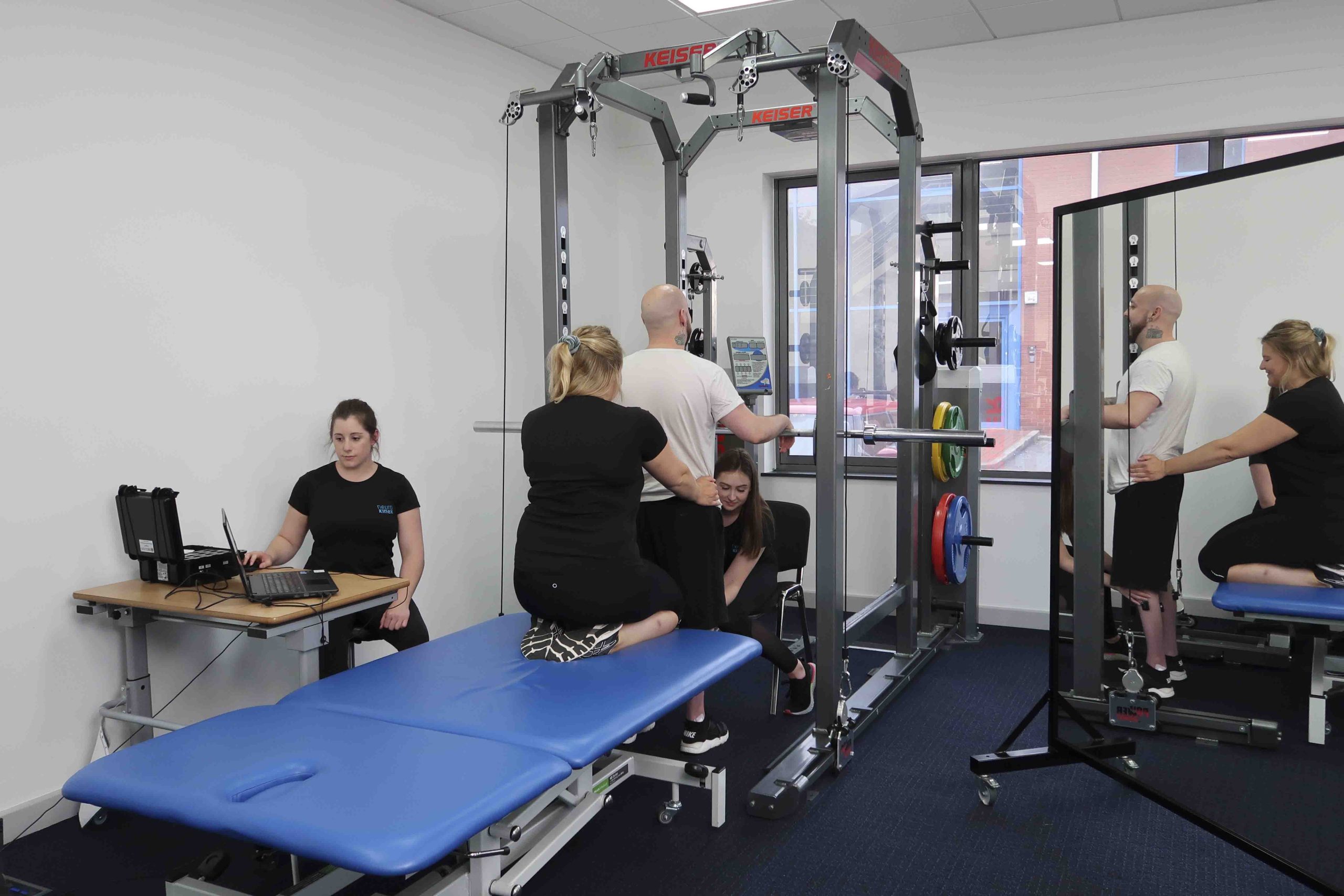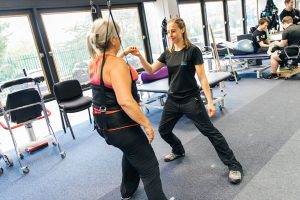When someone experiences a spinal cord injury (SCI), their life turns up upside down. In the first few days, weeks and months following their injury, lifesaving and lifechanging surgery and early-stage rehabilitation are managed within a hospital setting. Once stable and able to manage outside the confines of this controlled clinical setting, patients are discharged home and back into their community. And this is when the adjustment to ‘real life’ takes place as they learn to navigate everyday life with a spinal cord injury.
Adjusting socially, physically and emotionally to life outside the safety net of the neuro hospital is daunting. Community rehabilitation plays a vital role at this time: intended to fit with people’s lifestyles, it’s designed for life after discharge.
Community rehab takes a ‘360 degree’ holistic approach to re-engage people in their communities, build friendships and relationships and equip them to manage everyday situations. It also fosters confidence, promotes independence and seamlessly adapts to meet the changing needs of people and meet real life challenges head on.
Straight after discharge, an intensive recovery-focused rehabilitation programme works best to achieve some early gains in function, strength and mobility. Following this, a regular wellbeing maintenance programme with longer intervals between sessions can be adopted, with top up intensive sessions as needed to address specific challenges or to meet certain goals.
Community rehabilitation is an indispensable part of the rehab pathway post-hospital discharge. Here’s why:
Re-engaging in the community
Spinal cord injuries often lead to a sense of isolation and detachment from one’s community. Community rehabilitation programmes help individuals rebuild connections with their local community and regain a sense of belonging. By participating in various community activities, patients can interact with others who have similar experiences and rediscover their place in society.
Equipping people for everyday life
Functional rehabilitation is a core component of community rehabilitation and focuses on equipping individuals with the skills and knowledge they need to manage everyday situations effectively. This includes learning how to use mobility aids, perform essential self-care tasks and adapt to the challenges posed by their injury. Functional rehab empowers clients to regain a sense of control over their lives and through individualised programming can help them work towards very specific goals related to their work, home, family or leisure pursuits.
Building confidence and independence
One of the most significant hurdles faced by people with a spinal cord injury is the loss of confidence. Community rehabilitation programmes are designed to rebuild this confidence gradually. As individuals engage in community activities, they learn to adapt, develop new skills and gain the confidence to face life’s challenges head-on.
Independence is also key to a fulfilling life and, again, community rehabilitation is designed to help people manage day-to-day tasks such as using the bathroom, transferring in and out of their wheelchair and relearning fine motor skills to help them reduce their dependence on others.
Feeling ‘at home’
Being away from a clinical setting means community rehabilitation can provide a better environment for people’s mental wellbeing. They feel more like a client and less like a patient. Time and time again we hear how Neurokinex clients feel more like themselves, enjoying their sessions here as they would a gym workout. The social setting, relaxed environment and sense of community with other clients and our trainers is both liberating and therapeutic.
Pathway back to work, family and friends
The end goal for community rehab is to restore confidence, independence and function sufficiently well to allow people to engage more fully in family and social settings. For many, returning to work is another key outcome of community-based rehab enabling them to enjoy the workplace atmosphere, progress their career, restore financial independence and regain self-esteem.
By facilitating a smooth transition from hospital to the community, such rehab is uniquely placed to allow people to maximise their abilities post-injury. Quite apart from helping them live a fulfilling and independent life, community rehab greatly improves their physical and mental health and reduces their chance of secondary complications.
Playing such a pivotal part in the recovery pathway, community rehabilitation should be made available to everyone who needs it. This is the basis of our #Right2Rehab campaign which seeks to give as many people as possible the opportunity to redefine their recovery through activity-based rehabilitation in the heart of their community.




